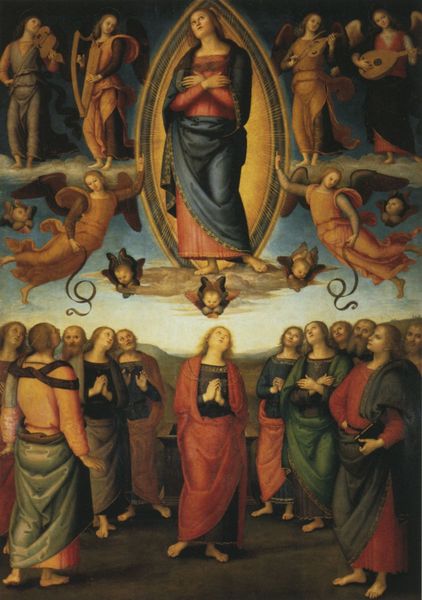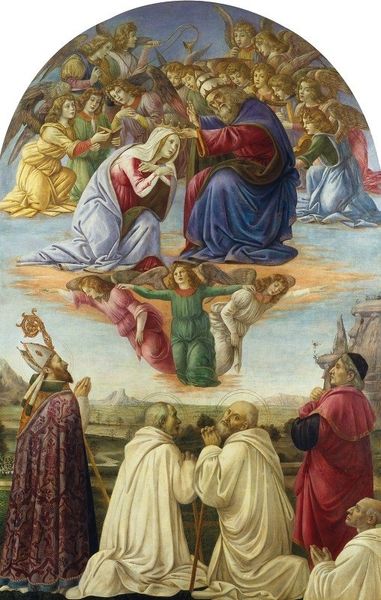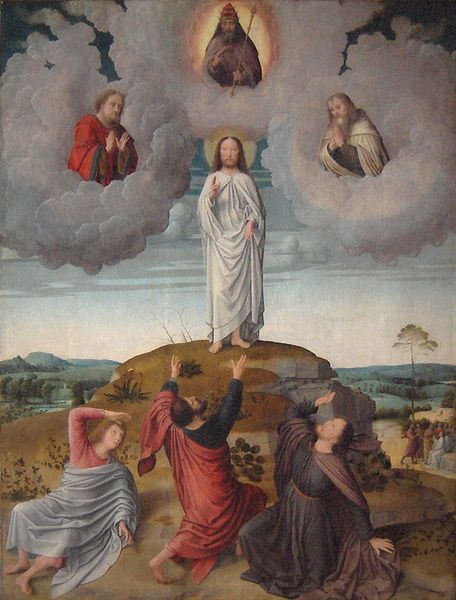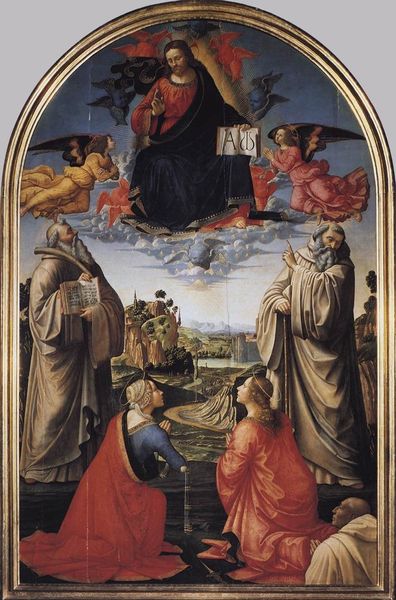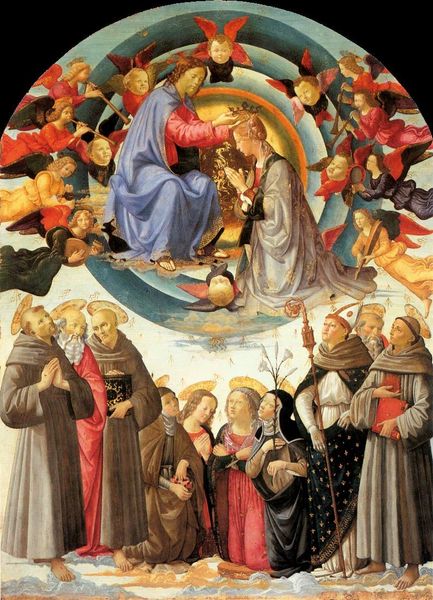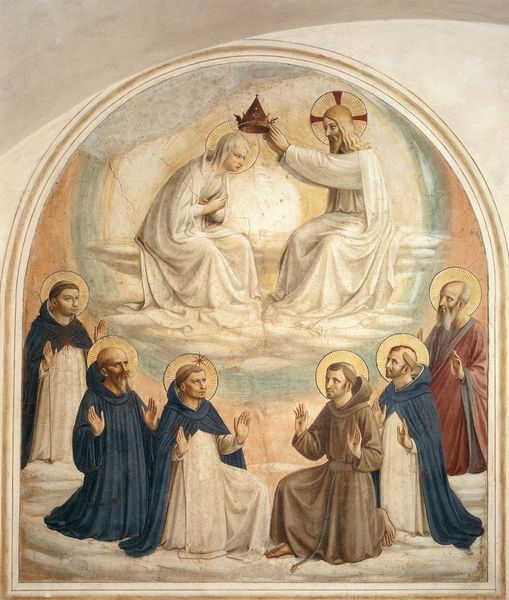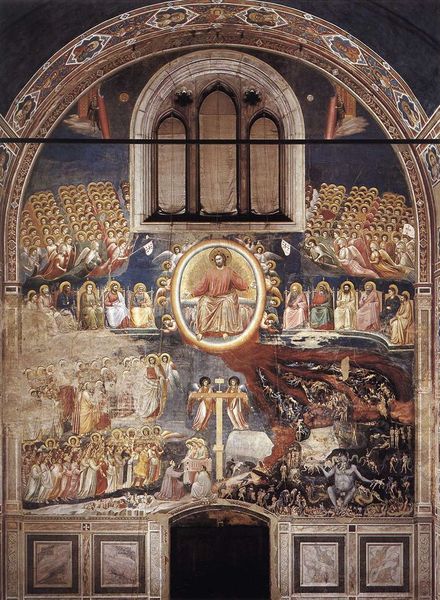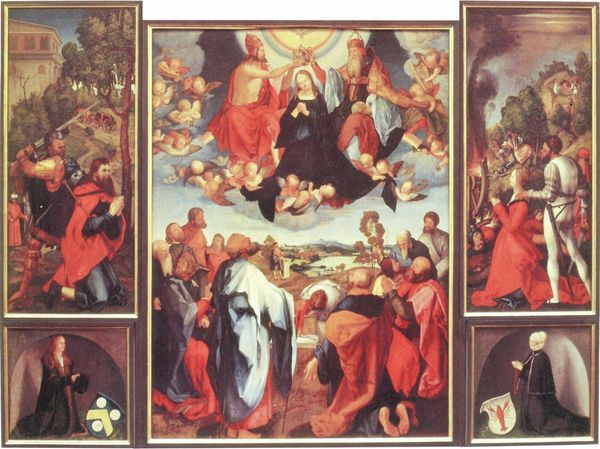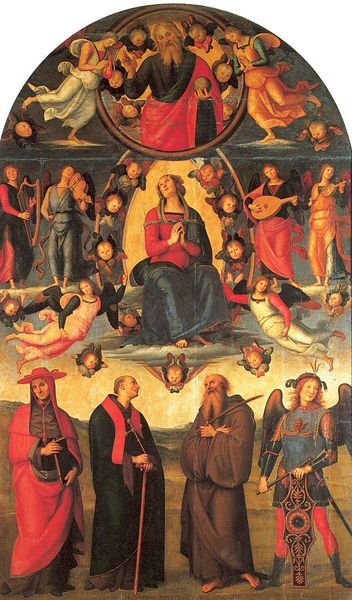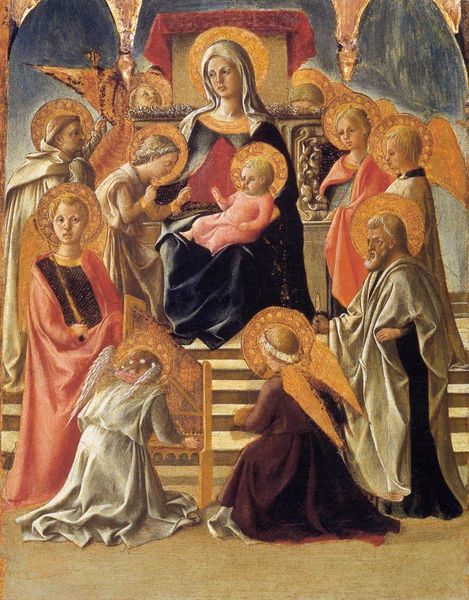
Death and Ascension of St. Francis 1300
0:00
0:00
giotto
Basilica of Saint Francis of Assisi, Assisi, Italy
painting, fresco
#
portrait
#
medieval
#
narrative-art
#
painting
#
figuration
#
fresco
#
oil painting
#
christianity
#
mythology
#
history-painting
#
italian-renaissance
#
early-renaissance
#
christ
Dimensions: 270 x 230 cm
Copyright: Public domain
Curator: This fresco, attributed to Giotto and his workshop around 1300, depicts the "Death and Ascension of St. Francis." It’s part of the fresco cycle in the Basilica of Saint Francis in Assisi. Editor: Immediately, the composition strikes me. It’s bisected horizontally – earthbound grief below, ethereal glory above. The contrast is palpable. Curator: Exactly. Giotto uses the lower register to illustrate St. Francis lying in state, surrounded by mourning friars, while the upper register portrays his ascension into heaven. The artist divides two key temporal and spiritual spaces by the very shape of their composition. Editor: The earthly realm, with its somber browns and huddled figures, emphasizes human loss and physical death. But look how Giotto renders those figures – such palpable weight to them. Curator: The historical importance cannot be overstated. Giotto's shift toward naturalism marked a profound departure from the Italo-Byzantine style. He brought emotional realism to religious art. The grief here isn't stylized; it’s raw. Editor: Yes, and the vibrant colors used for the robes in contrast to the browns really make these specific figures stand out against the darker earth tones surrounding them. What does it tell us? Curator: We can extrapolate based on context. The men are possibly leaders in the church looking over St. Francis, they look on at both him and his ascension to Heaven. Editor: Absolutely, they look above at a scene bursting with light, color and life. See the angelic figures floating around St. Francis as he is ascending, that entire scene creates a heavenly, serene ambiance that stands in stark contrast. The work then underscores its function for all observers, to mourn but know his spirit rises to everlasting peace. Curator: This fresco cycle served to promote the Franciscan order and underscore the sanctity of St. Francis, both by what happened when he was mortal and now upon his immortal ascension. This helped shape perceptions of St. Francis and his message for generations. Editor: A masterstroke of visual storytelling and spiritual propaganda all wrapped into a single, stunningly well-structured image. A cornerstone of art history to be sure.
Comments
No comments
Be the first to comment and join the conversation on the ultimate creative platform.
